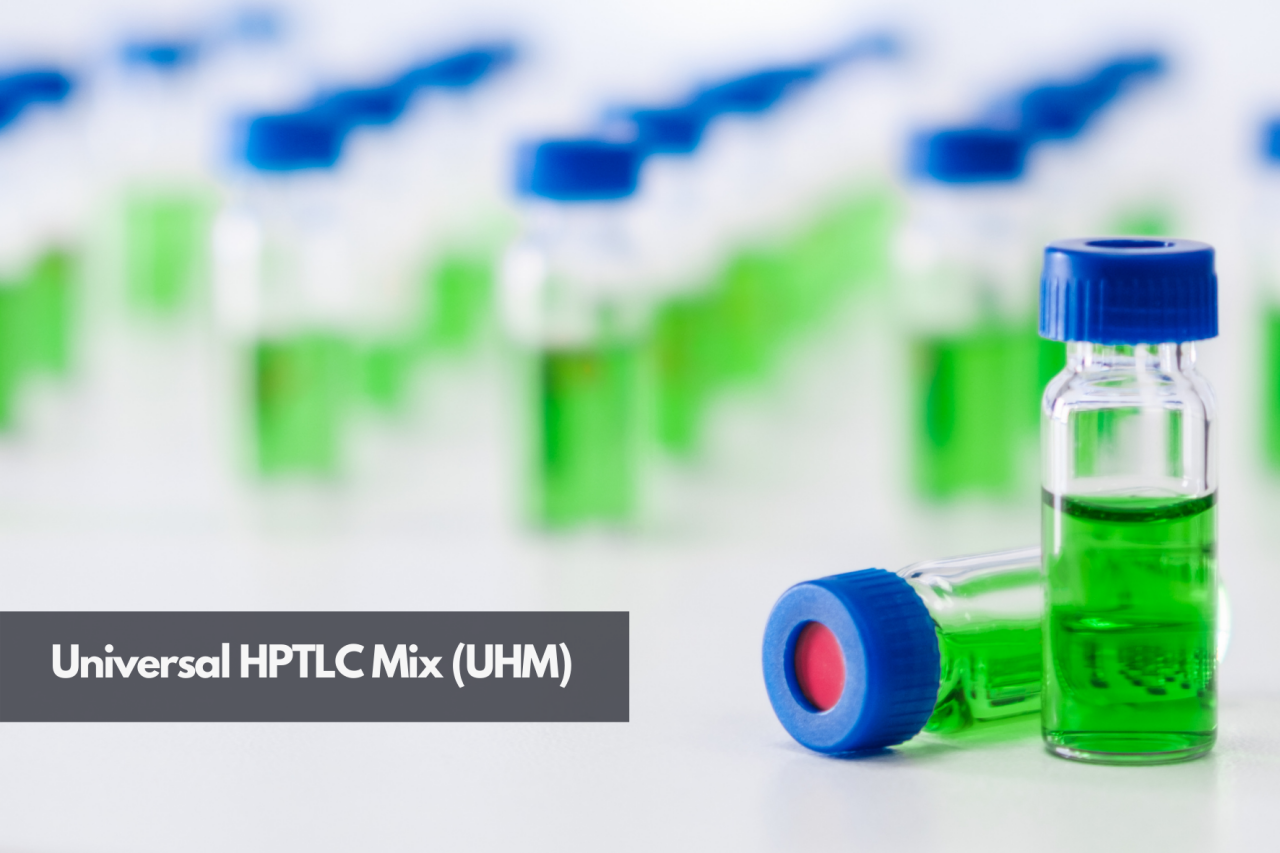
Universal HPTLC mix. What is that?
By Débora Frommenwiler and Eike Reich
Selecting a suitable System Suitability Test (SST) to qualify data of HPTLC analyses is not always a trivial task. Thinking about simplifying and improving the chromatographic qualification process, the lab teams at CAMAG and ANCHROM have developed a new concept in which a universal mixture of substances is used as SST.
This post will explain what SST is, what it is used for, and the innovation behind the new concept of the Universal HPTLC mix.
What is the System Suitability Test (SST)?
In routine analyses for quality control, laboratories need to ensure that their analytical methods (e.g., a chromatographic methods) work well. This means that they have to be reproducible, have a good separation (especially quantitative methods), and be suitable for the intended application. Those parameters can be checked in the SST.
But what is a SST? During the SST, usually a single or a mixture of known reference substance(s) is analyzed with the selected chromatographic method. The data obtained in the SST is compared against acceptance critera which qualify the performance of the chromatographic system and its apparatus. In the case of HPTLC, the SST has to be perfomed on each plate.
According to the US and the European pharmacopoeias, one system suitability criterion for HPTLC analysis is whether the colors of zones match the description in the monograph. However, in those compendia, the principal criterion for a suitable SST for HPTLC is that the selected reference substances have similar RF values and are just separable (e.g., Figure 1, analysis 1). Like this, whenever a problem occurs in the chromatographic system, the zones of the SST will co-migrate, and no separation will be observed, or they will be too far apart from each other (e.g., Figure 1, analysis 2 and 3, respectively). That interpretation is straight-forward, doesn’t require any calculation, and is widely adopted in the HPTLC world.
What are the problems with the current SST in HPTLC?
In the current approach to SST reference substances are typically selected based on the samples analyzed with a given method. This way, the same chromatographic system used for different analytes in independent methods, may be qualified by different reference substances in the SST. In the herbal medicine world, such reference substances are often expensive and maybe not commercially available.
Another problem in using two barely separable substances is that the SST will qualify the separation only in that region of the chromatogram (e.g., between RF 0.3 and 0.4 as in Figure 1), but not the entire chromatographic system.
The new Universal HPTLC Mix (UHM) concept
To address those problems, the lab teams at CAMAG and Anchrom have developed a new concept called Universal HPTLC Mix or UHM [1]. As the name indicates, they use a mixture of eight substances as SST, which are inexpensive, compatible with developing solvents of different polarities, and can be seen in various detection modes before derivatization (e.g., Figure 2).
Because those substances cover a wide range of polarity, at least some of them migrate through the chromatogram, from application position to development front, regardless of the system’s polarity. Furthermore, in all of the investigated developing solvents, there were at least three substances well separated (e.g., zones [3] – [8], Figure 2). Therefore, the UHM can be used with several developing solvents to qualify the entire RF range of an HPTLC chromatogram. As acceptance criterion, the RF values of the UHM substances, obtained with the selected developing solvent, should match those described in the method within a validated range.
With this new concept, the laboratories will no longer need to invest time for investigating suitable SST and consequently will spend less money on reference substances.
The idea itself is not new to other analytical techniques. Counter-current separation (CCS) and electrophoresis have used a similar model to qualify their data, also for quantification. The new possibilities of UHM in HPTLC analysis will be discussed in the next posts. For more information, check article just published [1].
[1] T. K. T. Do, M. Schmid, M. Phanse, A. Charegaonkar, H. Sprecher, M. Obkircher, E. Reich. Development of the first universal mixture for use in system suitability tests for High-Performance Thin Layer Chromatography. J. Chromatogr. A., 1638 (461830), 2021. DOI: 10.1016/j.chroma.2020.461830

Comments
Leave a comment